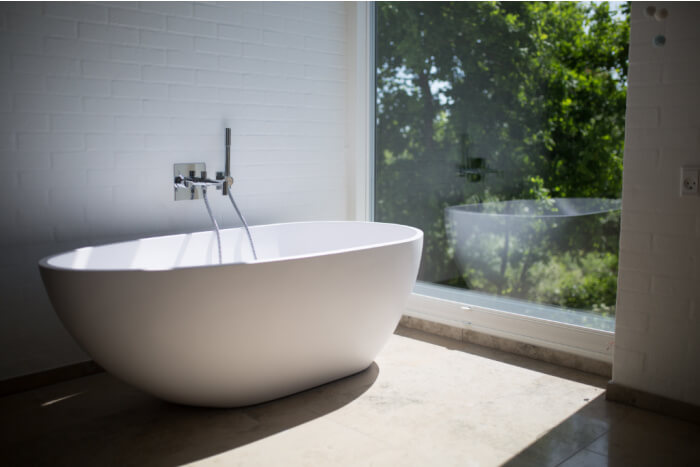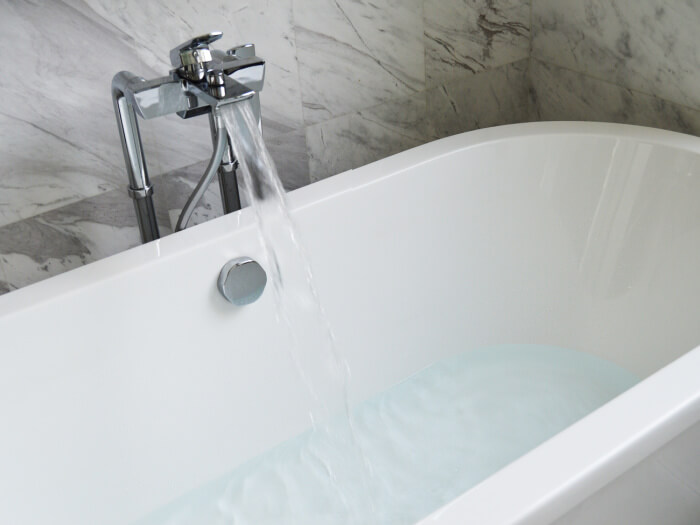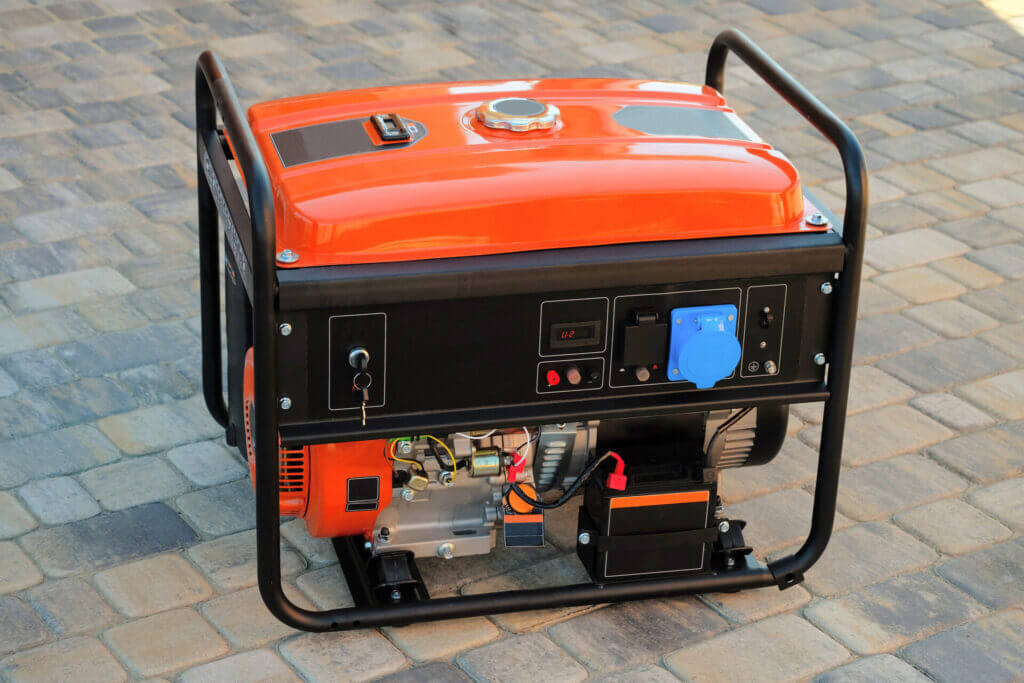Are you doing a bathroom remodel project?
Modernize can pair you with three to four pros in your area, so you can compare options and save time and money.
When it comes to a bathroom remodeling project, a new bathtub plays a huge role in setting the room’s tone. They can be a space’s focal point, while also serving as a source for comfort, reflection, and starting or ending your day. That is why deciding on the best bathtub for your space is such an important task.
With just the swap out of a bathtub, your bathroom can completely change. Options ranging from massaging tubs to clawfoot beauties can make the decision feel overwhelming as you search for the perfect new bathtub— but rest assured, Modernize is here to walk you through the process. Here are some things to consider.
Popular Bathtubs and Materials
The type of bathtub a homeowner selects can drastically change the feeling of the room — as well as the remodeling project’s price tag. The national average cost for a bathtub replacement and installation is $2,500. There’s a variety of different types of bathtub shapes, sizes, and materials. Here’s a general overview.
Some of the most popular bathtubs include the following:
- The built-in fiberglass tub: this traditional tub is durable and often found in children’s bathrooms. They are also inexpensive and work well in small bathrooms.
- The freestanding cast iron tub: Whether it’s classic clawfoot or a funkier shape, freestanding tubs become a bathroom’s focal point. A cast-iron model — heavy and resilient — will last a long time.
- The jet tub: With a mix of jets and massagers, these massage tubs are made with soaking in mind. They’re typically larger and deeper, giving you space to sprawl out and get the TLC you need.

Bathtub Materials: Pros and Cons
Just like any other remodeling project, the materials that go into your bathtub will impact its look, longevity, quality, and price. Here are some popular bathtub materials:
Find the Right Contractor for Your Bathroom Remodeling Project
Whether you’re ready to begin your project now or need some expert advice, our network of contractors are here to help. With a few simple questions, we’ll find the best local professionals for you
- Fiberglass: This is among the most common bathtub material offered. But along with its versatility and inexpensiveness, comes the price of longevity. Typically fiberglass bathtubs are more prone to scratching than other materials like porcelain. Pro-tip: an acrylic coating can extend a fiberglass tub’s lifespan.
- Cast iron: Just like the family cast iron pan or doorstop, cast iron bathtubs are made to last and be valued. They can endure a lot of years and wear and tear and often are paired with classic features like clawfeet and quirky colors. The biggest drawback with cast iron tubs is their weight. They can become especially heavy — especially when they are full. For that reason, contractors recommend reserving cast iron bathtubs for ground floor bathroom remodels.
- Porcelain on steel: Another inexpensive and popular material, these steel bathtubs are covered in a glossy, easy-to-clean porcelain finish. They’re lightweight, durable, retain their sheen, and are easy to clean. The biggest con with this material — which is also called enameled steel — is that the surface itself can rust.
- Marble or stone: These tub materials are usually the most customizable — from shape and size to color and stone variety. They can make for a stunning centerpiece bathtub. However, cons include the high cost for custom work, the added structures likely required from a contractor to support the stone materials, and a future of maintenance and upkeep to retain the tub’s finish.
Hiring a Quality Contractor
Depending on what you opt for, a new bathtub installation can be tricky work. It is important that you choose an experienced contractor who knows how to maximize your ambitions, as well as your budget for a satisfactory bathroom remodel.
Some reasons a contractor needs to be a top priority when it comes to getting a new bathtub include the fact that not all bathtubs work in all homes — some models can be too heavy! Additionally, built-in bathtubs can involve an extensive installation process, requiring sealing, mounting, and typically some sort of surrounding habitat.
Modernize can guide you through the selection and bidding process. We recommend comparing three to four contractor’s quotes to find the best price.
Things to mention to contractor contenders include:
- Your ideal timeframe
- Your desired budget
- The type of bathtub shape, size, and materials you’d like included
Of course, there is a lot more ground to cover when it comes to a bathroom remodeling project and selecting the appropriate contractor for the job. For details on what to ask your bathroom remodeling contractor ahead of time, find Modernize’s guide.
Find the Right Contractor for Your Bathroom Remodeling Project
Whether you’re ready to begin your project now or need some expert advice, our network of contractors are here to help. With a few simple questions, we’ll find the best local professionals for you
Reviews from Real Homeowners
Welcome to Homeowner Resources! We are the Modernize blog. Modernize pairs more than 3 million homeowners a year with pre-vetted contractors in their area. This blog started because we believe homeowners should know everything about their homes, from how their HVAC works to which front door colors they might love. On Homeowner Resources, you can find information on every part of your home, right down to how you can negotiate with contractors to get the best price. Here's more about the blog.
Need a contractor? Learn more about how Modernize finds the right pro for you.



